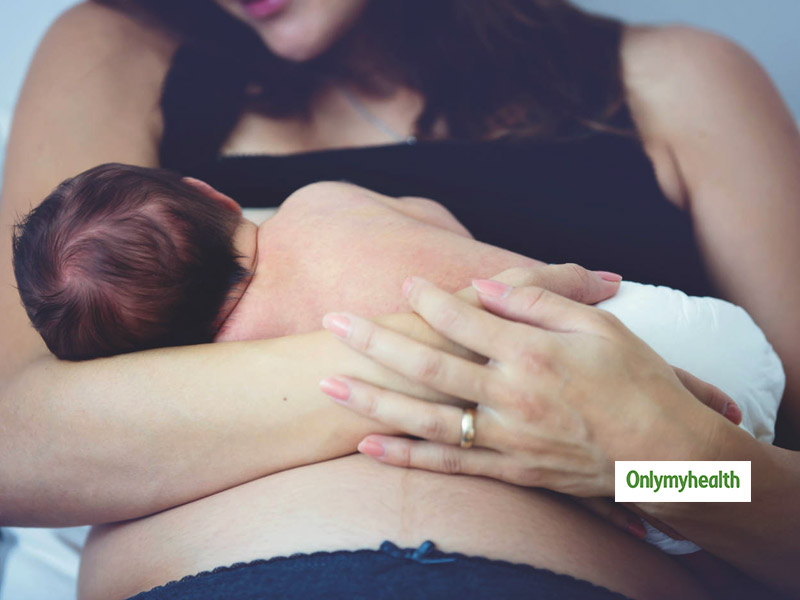
After giving birth, it takes a while for the milk to come. Generally, you can expect the milk to flow anywhere between one and three days after childbirth. It may take longer if you’ve had a C-Section. Before the regular breast milk, you’ll have Colostrum coming out. This is a thick pre-milk substance full of nutrition and antibodies for the newborn. Although there is not much of it, it’s powerful stuff.
Table of Content:-
Breast infections most commonly occur one to three months after the delivery of a baby. If mastitis (inflammation of breast tissue) is left untreated, an abscess (a localized pocket or collection of pus) can develop in the breast tissue. It is a more serious type of infection. Bacteria normally found in a baby’s mouth or on the nipple can enter the milk ducts through small cracks in the skin of the nipple and can multiply rapidly in the breast milk.

Symptoms of Breast Infection
The first symptoms of breast infection are a pain, swelling, redness and tenderness. You may start to feel unwell, almost as if you have the flu with a raised temperature, general aches and pains and a headache. Before infection is apparent, you may have a cracked nipple or a break in the surrounding skin. You may also be aware that part of the breast is engorged because the breast is not draining properly.
Also Read: Midlife Mistakes: Things Women Should Avoid While Growing Old
Treatment For Breast Infection
- If you suspect you are developing an infection, you should see your doctor as soon as you can. You will almost certainly be given an antibiotic that can be safely taken while you are breastfeeding.
- You must carry on breastfeeding because draining the infected milk can reduce the chances of an abscess forming. Your baby will not come to any harm from germs in the milk as they will easily be killed off once they reach the baby’s stomach.
- If having started antibiotics, your infection does not settle quickly, then an abscess has likely developed; it needs to be drained. Earlier, general anaesthetic was used to drain a breast abscess but now it is possible to treat it either by removing the pus through a needle or making a small hole in the breast and draining the abscess under local anaesthetic.
How To Prevent Breast Infection
Also Read: World Breastfeeding Week 2019: Step By Step Guide On How To Breastfeed A Baby

Sometimes mastitis is unavoidable. Some women are more susceptible than others, especially those who are breastfeeding for the first time. The following may help reduce the risk of breast infections:
Breast Care Tips
- Get as much rest as possible.
- Eat a healthy diet to keep milk production up.
- Feed your baby frequently, thus emptying the breasts fully and promoting good breast health.
- Feed your baby in a variety of positions to help empty the breast evenly, which may prevent some of the challenges of breastfeeding.
- Avoid using soap, which washes away the natural lubricant secreted by the red bumps on the areola.
- Try Lanolin (which doesn’t need to be washed off) on the nipples, but avoid other creams or lotions.
- Ice packs on the breasts in between feedings can help to decrease swelling.
- Massage your breasts from the armpit toward the nipple to soften them.
- Weaning slowly, over several weeks, rather than abruptly stopping breastfeeding

Bra Tips For healthy Breasts
- Get a supportive bra, preferably one with elastic reinforcement rather than underwires.
- Make sure your bra fits properly - not pinching or binding any part of the breast.
- Wear a bra with natural fibre lining the breast cup. Synthetic materials can trap moisture and promote infection.
- Use absorbent nursing pads. You can make your own by cutting up and an old towel.
- Wear your nursing bra all the time, even when sleeping, to support your milk factory!
(About The Author: Dr. Tripat Choudhary is Senior Consultant – Obs & Gynae at Fortis la Femme.)
Read more articles on Women's Health
How we keep this article up to date:
We work with experts and keep a close eye on the latest in health and wellness. Whenever there is a new research or helpful information, we update our articles with accurate and useful advice.
Current Version